Bulbs
Flower Basics
Flower Beds & Specialty Gardens
Flower Garden
Garden Furniture
Garden Gnomes
Garden Seeds
Garden Sheds
Garden Statues
Garden Tools & Supplies
Gardening Basics
Green & Organic
Groundcovers & Vines
Growing Annuals
Growing Basil
Growing Beans
Growing Berries
Growing Blueberries
Growing Cactus
Growing Corn
Growing Cotton
Growing Edibles
Growing Flowers
Growing Garlic
Growing Grapes
Growing Grass
Growing Herbs
Growing Jasmine
Growing Mint
Growing Mushrooms
Orchids
Growing Peanuts
Growing Perennials
Growing Plants
Growing Rosemary
Growing Roses
Growing Strawberries
Growing Sunflowers
Growing Thyme
Growing Tomatoes
Growing Tulips
Growing Vegetables
Herb Basics
Herb Garden
Indoor Growing
Landscaping Basics
Landscaping Patios
Landscaping Plants
Landscaping Shrubs
Landscaping Trees
Landscaping Walks & Pathways
Lawn Basics
Lawn Maintenance
Lawn Mowers
Lawn Ornaments
Lawn Planting
Lawn Tools
Outdoor Growing
Overall Landscape Planning
Pests, Weeds & Problems
Plant Basics
Rock Garden
Rose Garden
Shrubs
Soil
Specialty Gardens
Trees
Vegetable Garden
Yard Maintenance
Growing Lemon & Lime Trees
Growing Lemon & Lime Trees. Lemon and lime plants can make a great addition to your landscape and garden with their color. The fruit can be used in the kitchen, and the plants can also attract some good insects that may help other plants around them. It is best to plant lemon and lime trees midsummer in order for them to establish roots before any...
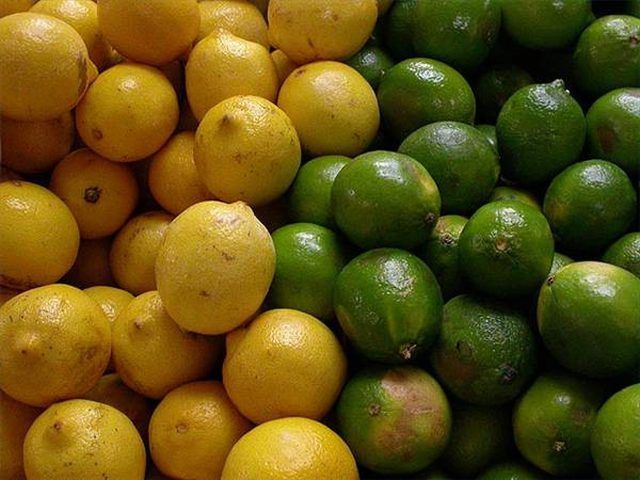
Lemon and lime plants can make a great addition to your landscape and garden with their color. The fruit can be used in the kitchen, and the plants can also attract some good insects that may help other plants around them. It is best to plant lemon and lime trees midsummer in order for them to establish roots before any sort of winter or frost.
Things You'll Need
Lemon plants
Lime plants
Mulch or compost maker
Shovel
Water
Fertilizer
Pruning Shears
Trowel
Decide where you want to plant your lemon or lime tree once you purchase it. You can plant the tree in the ground or in a large pot, but it must be outside. These type of citrus trees grow best in climates with mild winters such as the Southwest, or states like California and Florida. Find an area that gets sun 3/4 of the day with shade the rest of the time. Make sure it is a well-drained area, but it shouldn't be on too much of a slope.
Become familiar with the type of pests in your area. Although citrus trees have few insect pests and fungal diseases, there are certain insects that love citrus trees, such as ants, wild rabbits, mites, and carver bees. Lady beetles are beneficial to your plants, so do not be alarmed if you have a surplus of them.
Purchase lemon and lime trees when they are young saplings. At your local nursery, have a licensed worker help examine the trees to make sure there is no disease, fungus or problems. Look for the trees with healthy, green and shiny leaves. The trees should also have sturdy branches and bark.
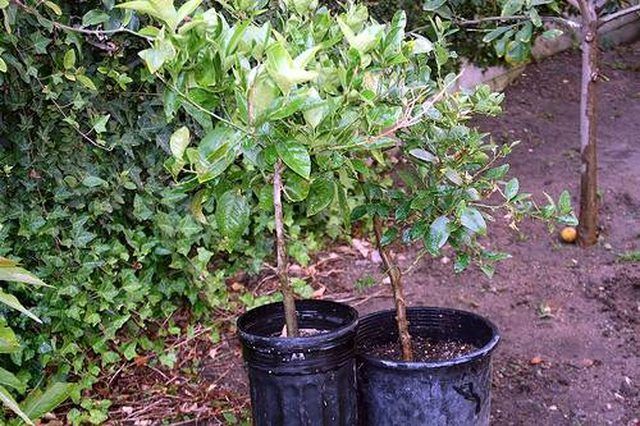
Plant the lemon and lime saplings in the area that is well-drained and with sun most of the day. Use the shovel to dig out a hole about one foot deep by one foot wide. Place the sapling in it. Use the trowel to cover up the roots with 2 to 3 inches of dirt, mulch and fertilizer mixture. Leave plenty of water to conserve moisture for the tree. If you are planting the lemon and lime trees next to each other, plant them at least four feet apart.
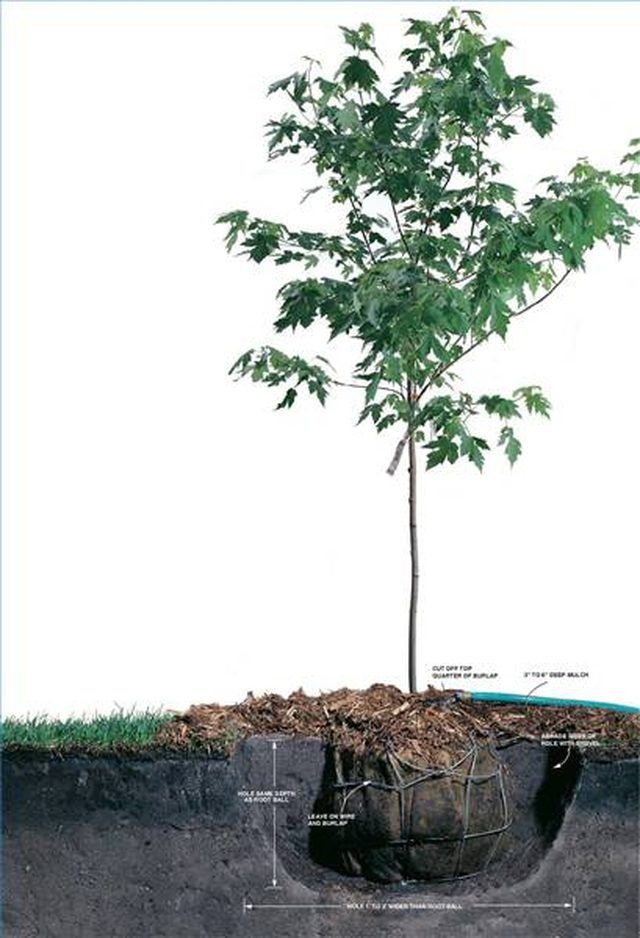
Water the trees with a large amount of water every 5 to 8 days Do this in order to soak through all of the roots, especially within the first month of planting them. After one month, water with a large amount of water every 8 to 10 days. If you live in a rainy area, you can water less.
Let the tree grow on its own with the watering assistance. Do not fertilize again until the weather has been cooler for awhile. If you plant the trees in midsummer, once February comes around, start to fertilize the tree every 5 weeks until the beginning of September. Repeat this process every year as the tree grows stronger.
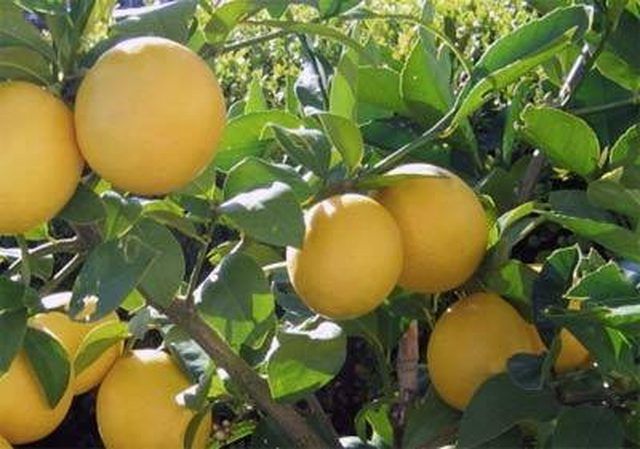
Prune the lemon and lime trees with the pruning shears every year to keep new growth coming back. Harvest the lemons and limes once the fruit reaches a full plump size and appropriate color. For lemons, harvest when they are a medium to deep yellow and the size of a fist or larger. For limes, harvest when they are a medium to dark green and are larger than a walnut. For some lemon and lime trees variations, the size and color may be different.
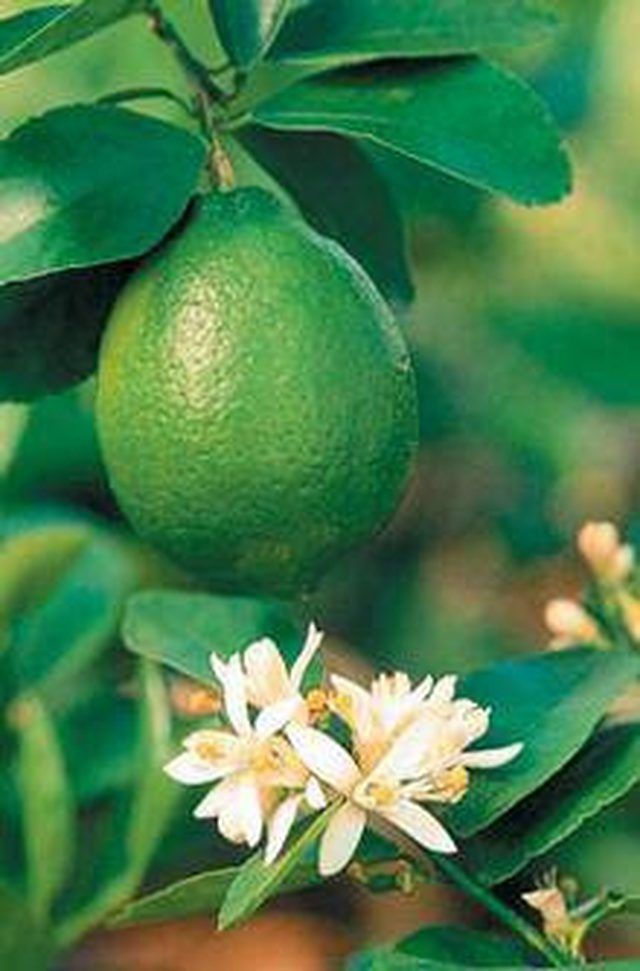
Tips & Warnings
Always water and fertilize your trees with a consistent cycle and with care in order to produce the best abundance and quality of fruit possible. Also do this to keep your trees looking healthy and attractive.
Always be careful when working with sharp instruments such as pruning shears and any sort of chemicals in fertilizers.